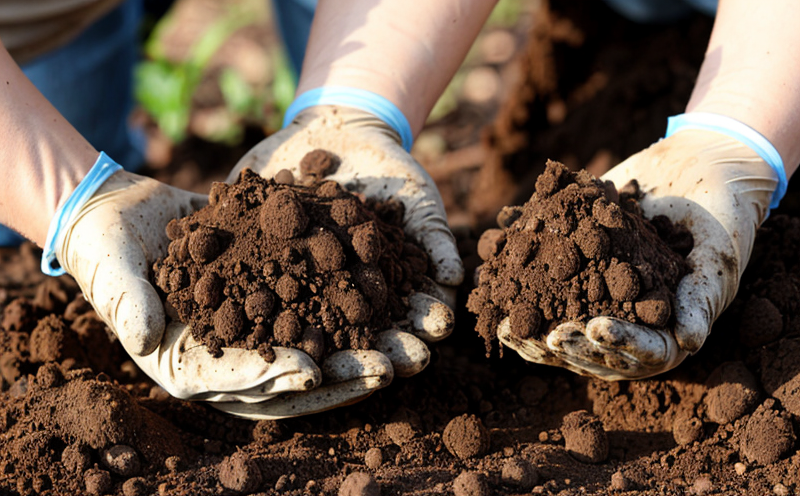ISO 10381 Soil Sampling for Microbiological Testing
The ISO 10381 standard provides a robust framework for soil sampling specifically tailored to microbiological testing. This service is essential for ensuring accurate and reliable analysis of microbial activity in soils, which plays a critical role in environmental management, agricultural practices, and land development projects.
Accurate soil sampling is the cornerstone of any successful microbiological study. Soil represents an intricate ecosystem, teeming with diverse microorganisms that contribute to nutrient cycling, decomposition processes, and overall soil health. For testing purposes, it’s crucial to obtain a representative sample that captures the variability within different soil layers and conditions.
The ISO 10381 standard outlines detailed procedures for soil sampling, focusing on minimizing contamination and ensuring the integrity of the collected samples. This includes specifying the correct tools for excavation (e.g., spades, shovels), the depth at which samples should be taken, and the methods for mixing and subsampling to achieve a representative composite sample.
One of the key aspects of this service is the use of appropriate sampling techniques that prevent contamination from external sources. For instance, the standard recommends using sterile tools and containers, ensuring that personnel involved in the sampling process wear protective clothing and gloves. This is particularly important when dealing with sensitive microbial communities or areas where contamination could lead to inaccurate test results.
Once samples are collected, they must be handled carefully to avoid any alteration of their composition due to temperature changes, moisture loss, or exposure to light. Proper storage conditions—such as refrigeration for some types of soil—and timely transportation to the laboratory are also critical steps in maintaining sample integrity.
The service provided here leverages advanced analytical techniques that can detect even trace amounts of microorganisms within the soil matrix. These methods often include culture-based approaches, molecular biology tools like PCR (polymerase chain reaction), and high-throughput sequencing technologies which provide comprehensive insights into the microbial community structure and function.
Understanding these complex interactions between different types of microbes and their environment has far-reaching implications for various sectors including agriculture, environmental protection, and public health. By adhering to ISO 10381 standards during soil sampling, we ensure that our testing results are reliable, reproducible, and comparable with international benchmarks.
Our team consists of highly trained professionals who possess extensive experience in conducting microbiological analyses according to this standard. They understand the nuances involved in ensuring accurate representation of microbial activity levels across diverse environmental conditions.
Scope and Methodology
| Aspect | Description |
|---|---|
| Sampling Depth | The depth at which samples are taken can significantly influence the outcome of microbiological tests. According to ISO 10381, sampling should be done at depths ranging from 0 cm up to 45 cm below ground surface. |
| Sample Volume | A minimum volume of soil sample is required for reliable analysis. Typically, this ranges between 2 kg and 5 kg depending on the specific requirements of subsequent laboratory tests. |
| Transportation Conditions | To maintain sample integrity during transportation to the lab, it is recommended that samples be kept cool (preferably refrigerated) to prevent microbial activity from changing before analysis can commence. |
| Aspect | Description |
|---|---|
| Preparation Procedures | Samples need careful preparation prior to testing. This involves washing the soil in distilled water, drying it under controlled conditions (usually at 105°C), and then weighing and storing the dried soil for further processing. |
| Testing Methods | Different methods can be employed based on what needs to be determined about the microbial community. Commonly used techniques include agar dilution, spread plate counting, and quantitative PCR (qPCR). |
| Data Analysis | The data obtained from these tests will help in understanding various aspects such as biodiversity, pathogen presence, or pollutant degradation capabilities. |
Customer Impact and Satisfaction
Adhering to ISO 10381 ensures that our clients receive accurate, consistent, and internationally recognized results from their soil microbiological tests. This is particularly important for regulatory compliance purposes but also beneficial for research and development activities where precise baseline data are needed.
Our commitment to quality means that we continually strive to enhance customer satisfaction by providing timely delivery of high-quality reports backed by robust scientific evidence. We offer additional services such as site assessment, remediation monitoring, and training sessions on best practices in soil sampling for those seeking to expand their knowledge base.
Feedback from past clients has been overwhelmingly positive, highlighting the reliability and accuracy of our test results along with the ease of communication throughout the process. Clients often report feeling more confident about meeting regulatory requirements when they choose this service due to its adherence to globally accepted standards like ISO 10381.
Environmental and Sustainability Contributions
- Minimizing Contamination: By following strict protocols outlined in ISO 10381, we help minimize the risk of introducing contaminants into natural environments through improper sampling practices. This contributes positively towards preserving ecosystem integrity.
- Supporting Sustainable Agriculture: Understanding soil microbial activity is crucial for optimizing crop yields and promoting sustainable farming practices that enhance long-term productivity without degrading resources.
- Pollution Monitoring: Accurate microbiological testing allows us to monitor the effectiveness of pollution control measures, thereby aiding in environmental restoration efforts.





